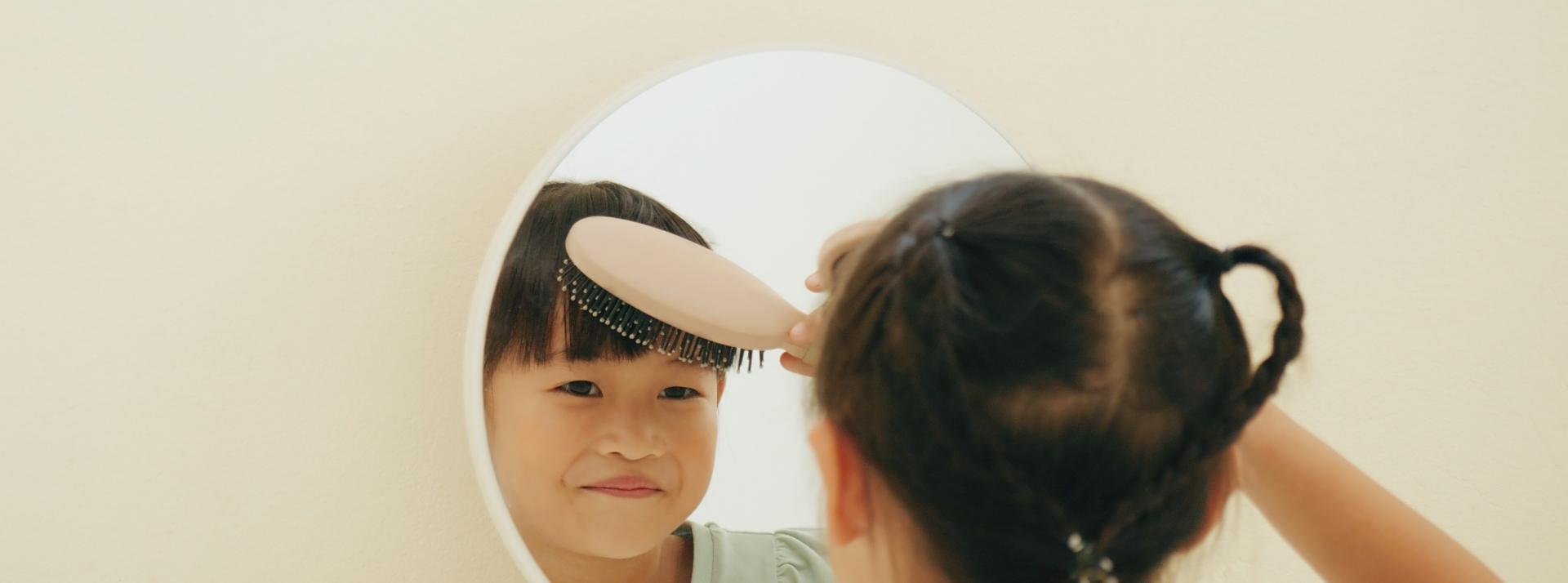Head lice
Head lice are tiny insects that live on the scalp. They are about the size of a sesame seed. They lay eggs, called nits. Nits stick to the hair, very close to the scalp.
What are head lice?
Head lice are small, wingless insects that appear greyish-brown in colour. These parasites live on the scalp and feed on human blood. Head lice lay eggs, known as nits, which are attached to hair strands near the scalp. Once hatched, the empty egg case is left behind as a nit. Although head lice are uncomfortable and cause itching, they do not spread disease or cause illness.
Symptoms of head lice
Common symptoms of head lice include:
- Crawling or tickling sensation on the scalp
- Itchy scalp, caused by an allergic reaction to the bites
- Scratch marks or small red bumps that resemble a rash
How to check for head lice
Where to look for lice and nits:
- Close to the scalp
- Behind the ears
- At the back of the neck
- On top of the head
What to look for:
- Child frequently scratching the head
- Adult lice (which may be difficult to see as they are very small)
- Eggs (nits), which are easier to spot than adult lice
Nits are tightly attached to the hair, close to the scalp. They are greyish-white, oval-shaped, and resemble dandruff but cannot be brushed off.
How to check for lice:
- Shampoo the hair and rinse thoroughly.
- Apply enough conditioner to cover the entire scalp.
- Use a wide-toothed comb to detangle the hair.
- Use a fine-toothed comb to search for lice and nits.
- Have your child lean over a sink for better visibility.
- Comb through the hair from the back to the front.
- After each stroke, wipe the comb on a paper towel to check for lice.
Treatment for head lice
If you find lice or nits, use the wet-combing method to treat the infestation. Apply hair conditioner or use a head lice shampoo, which is available at most drugstores.
- Wash and rinse the hair: Start by washing and rinsing the hair thoroughly. Apply enough conditioner to cover the entire scalp. The conditioner helps immobilize lice, making them easier to spot.
- Ensure proper lighting: Have your child sit under bright light. A magnifying glass can help you spot lice more easily.
- Section the hair: Divide the hair into four sections. Carefully check each section with a fine-toothed comb, ensuring you inspect the entire scalp.
- Examine the comb for lice: After each stroke of the comb, wipe it on a paper towel and check for lice or nits (eggs).
- Focus on key areas: Lice move quickly and are usually found close to the scalp, especially at the base of the neck and behind the ears.
What to do at home
If another child in your household has head lice, immediately check your child's hair for nits. It’s recommended to check all children once a week for head lice.
If someone in the household has head lice, treat everyone in the home on the same day. Follow these steps:
- Clean brushes, combs, and hair accessories with very hot water. Ensure each person uses their own personal items.
- Wash hats, pillowcases, and stuffed animals in hot water and dry them in a hot dryer if possible.
- Children with head lice should begin treatment before returning to school or daycare. Inform the school or daycare about the lice.
There's no need to deep clean your home, as lice do not survive for long once off the scalp.
Prevention of head lice
The most effective way to prevent head lice is through cooperation between parents, children, schools, and healthcare providers. Regular checks for head lice using the wet-combing method help reduce the spread. Encourage children not to share hats, combs, hair accessories, or hairbrushes. If your child has long hair, tie it up or braid it.
Keep in mind, having head lice once does not protect against future infestations. Regular head lice checks should be part of your family’s hygiene routine.


